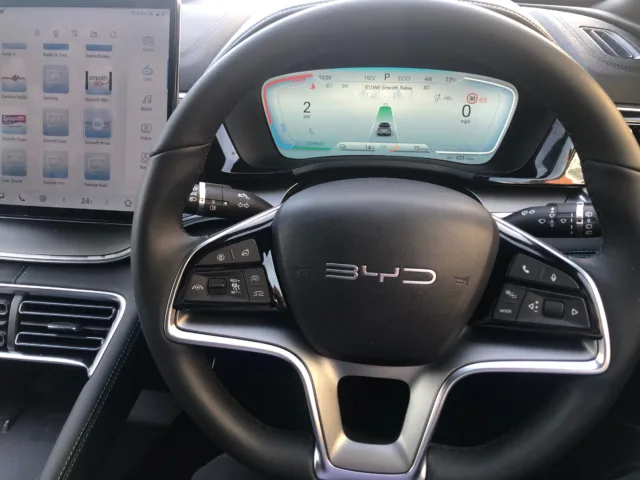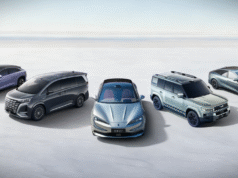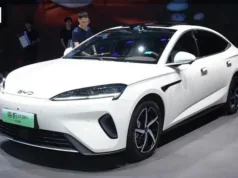Not to be confused with the BYD Seal sedan, I imagine the “U” in the name of the BYD Seal U DM-i stands for “Utility”, seeing as it is, fairly obviously and inevitably, yet another SUV to enter a ridiculously overcrowded sector of the car market. However, I think the “U” ought to stand for “ubiquitous”, given the number I’ve noticed out “in the wild”. They don’t stand out exactly, but once introduced, you can easily spot them, and the assertive styling at the front is at least a little more distinctive than most.
This tells me a few things about the car. First, that my casual anecdotal experience is consistent with the company’s propaganda, which declares that “SEAL U DM-i SUV continues to lead BYD’s sales charts and is the UK’s best-selling PHEV (plug-in hybrid electric vehicle) year-to-date”, and that Britain is their second-biggest market after China itself (though I suspect that may also have something to do with Donald Trump’s tariffs closing off the American market.)

Although BYD are probably best categorised as a fully battery electric vehicle maker, they’re not neglecting the petrol-hybrid buyer, so, for now, the Seal U is only sold as a plug-in hybrid, with a choice of battery sizes and a four-wheel drive version. Equipment levels are the same for each variety, and are comprehensive – head-up display, loads of cameras, big touch-rotatable touchscreens, voice control, well-judged semi-autonomous driving settings, ambient lighting for the cabin… the lot really. More disappointing is the very narrow (and boring) range of colours and zero choice on the upholstery – black faux leather.
THE SPEC
BYD Seal U DM-i Comfort
Price: £35,315 (as tested, range starts at £33,315)
Engine capacity: 1.5l petrol, 4-cyl + 71.8kWh battery, auto fwd
Power output (PS): 217
Top speed (mph): 105
0 to 60 (seconds): 8.9
Fuel economy (mpg): 706 (incl using electric mode)
CO2 emissions (WLTP, g/km): 9 (incl using electric mode)
The reason for the sales success is fairly obvious; like most Chinese models sold under their Chinese badging (as opposed to “borrowing” a better-known European nomenclature, like the Volvo EX30 and Lotus Eletre), the Seal represents excellent value for money. The list price starts at about £33,000 for a good-sized, practical family car; the plug-in hybrid set-up is extremely economical provided you charge it up at home; and the benefit-in-kind tax rates for business users are close to pure electric car levels – at 8 per cent for the Seal U in the bigger battery “Comfort” variant.
Money talks, in other words, but the cost of living crisis has meant the squeezed middle classes who acquire new cars, also have their ears open more than in the past, and are apparently unperturbed about buying a car from an unfamiliar maker, such as BYD (which stands for “Build Your Dreams”).
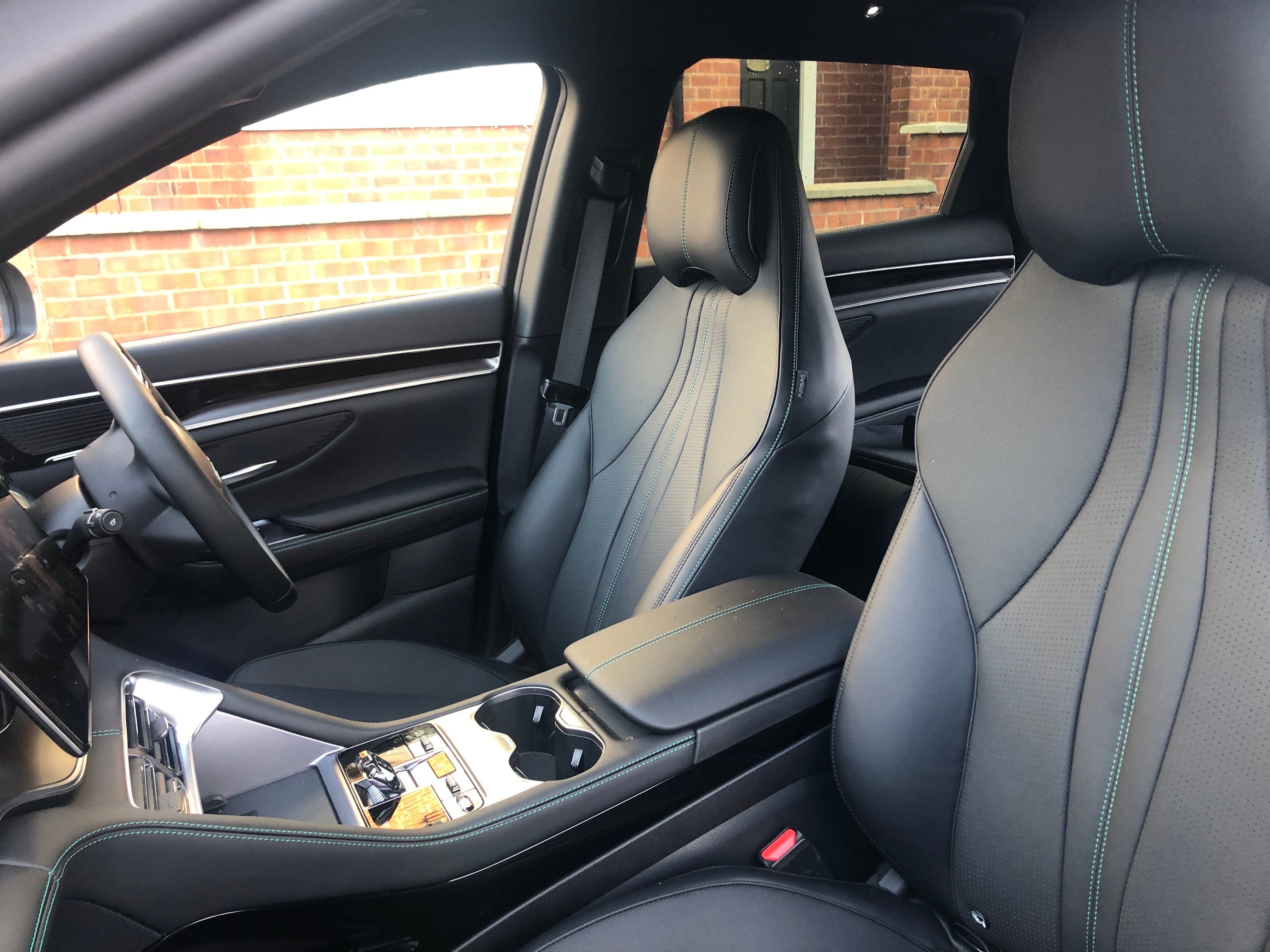
So the welter of Chinese brands invading the UK right now are having an easier time of it than the previous waves of Japanese and Korean makes had some decades ago. Not all the brands, by the way, are as accomplished as BYD, and there is a pecking order just as there is with European and American stuff, and BYD is what you might call mainstream premium, borderline Peugeot, albeit with not as much panache in the interior design or exterior as in a 3008, say. (BYD’s “premium” sibling Denza will be coming soon to take the battle to the likes of Audi.)
In terms of its drivetrain technology, this Seal U is comparable to, and reminiscent of, the sophisticated kit and propulsion management systems you’d find in an equivalent Honda, which is praise indeed. Depending on the switchable drive settings you choose – economy, normal, sport, even “snowfield” – the car’s brain will balance performance and economy and meld the internal combustion engine and battery/electric motor to optimum effect. The result, they claim, is a maximum range in one tank, plus one full battery charge, of 700 miles – enough to get from London to Berlin.
I hope the picture is clear – you don’t have to make too many compromises in return for this value offering, though I’d advise anyone looking for a bit of driving thrill to be thrown in should shop around a bit more – a Cupra Terramar would fit you better.
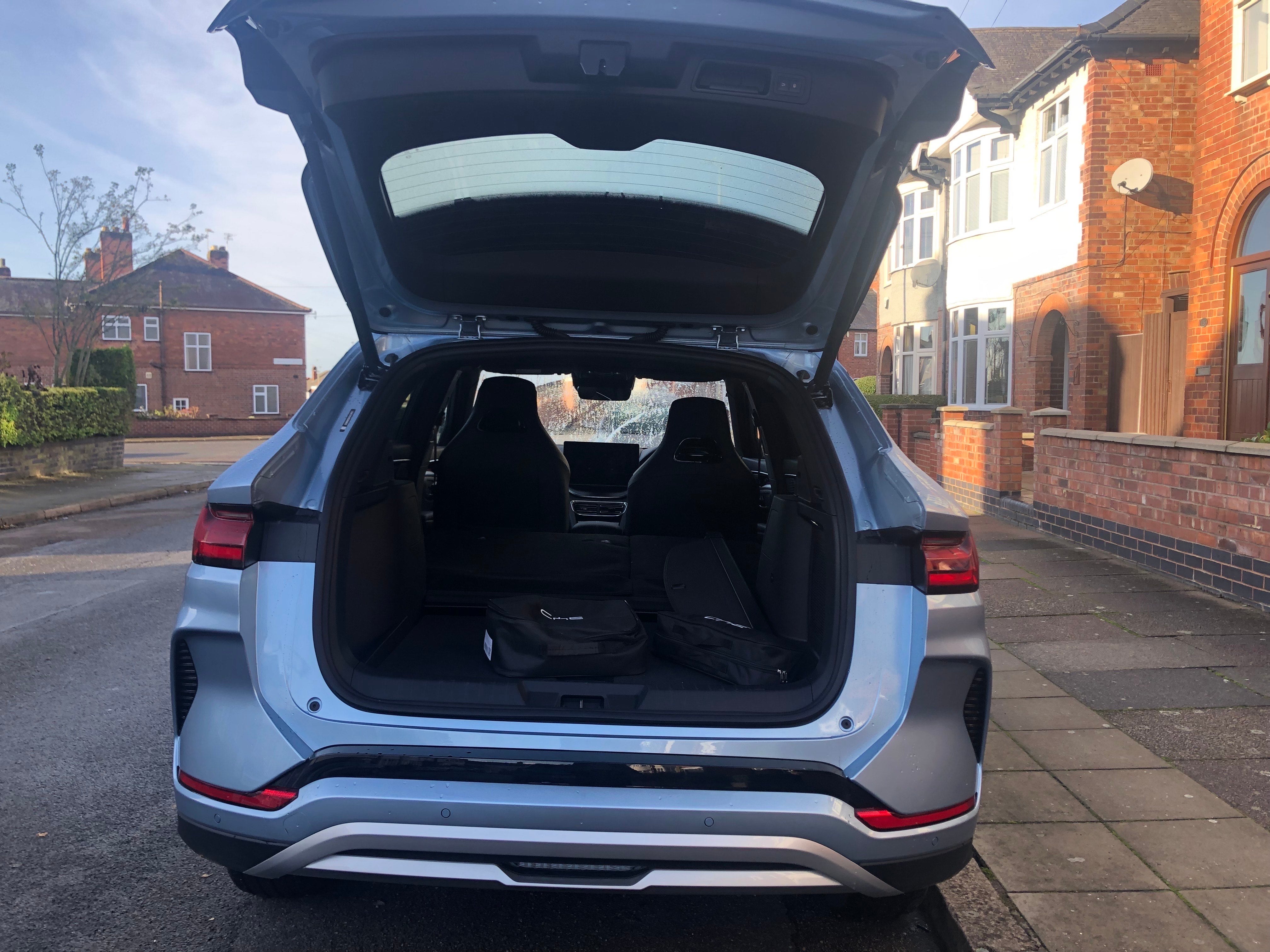
People aren’t frightened of buying a BYD, and, with some reservations, I’d say they’re right. It’s a sorry fact that a combination of industry consolidation and consumer tastes has tended to homogenise the industry and, on the whole, the entry of the Chinese giants hasn’t altered that trend. However, they do offer more choice and competition, which should be no bad thing, and the products – on the whole – are perfectly competitive.
In fact, I only have two reservations about the BYD Seal. One was the slightly noisy fan on my example, which could be attended to very easily. The second is simply that we don’t yet have much idea about the durability of BYD products in British conditions. There’s no reason to doubt they are comfortable (particularly on a long motorway run), well-made and reliable, and will serve their customers well, but the company has only been around since 2003, and one wonders how many will still be on the road in a decade or two…?


